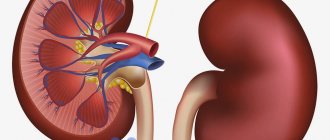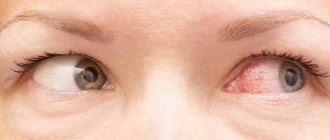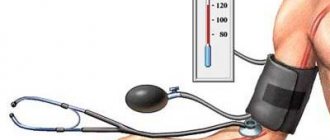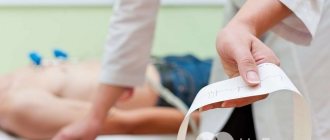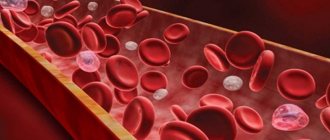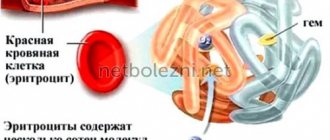The structure of the eye has a complex structure, but it is not necessary to study it all in detail to understand what intraocular pressure is and why it suddenly deviates from the norm. It is enough to imagine the eye as a liquid surrounded by multiple membranes. The outer one is the sclera, behind it is a network of blood vessels, and even deeper is the ciliary body. When the muscles contract, the shape of the lens changes and the person can see something up close. But this is not the only function of the ciliary body.
Another important task assigned to it is the secretion of intraocular fluid. By circulating between the various chambers of the eye, it ensures normal metabolism and maintains a certain level of intraocular pressure (IOP). In other words, the fluid secreted by the ciliary body constantly puts pressure on the eye, setting the parameters of its normal size and shape. As soon as the amount of this fluid increases excessively or there are problems with its outflow, the pressure will jump. This will entail distortion of the shape, and, consequently, of the entire optical system of the eye.
Important! Intraocular pressure directly affects the quality and acuity of vision. When it deviates from the norm, the shape of the eyeball changes and the mechanisms of accommodation that allow close vision are disrupted.
Normal blood pressure and pathology
Intraocular pressure may fluctuate slightly depending on what time of day the test is performed, but in general it is a constant value. In the morning, intraocular pressure may jump by 2-3 marks. Most likely, the reason lies in the horizontal position of the body, slowing of the pulse and breathing, as well as the predominance of the parasympathetic nervous system during sleep. By evening the pressure gradually drops.
Normal intraocular pressure ranges between 10 and 21 mm. Hg column, although much depends on how the measurement is carried out. These numbers are the limit of true pressure, but if you try to determine it using a tonometric method, the norm will be different - from 12 to 25 mm. Hg Art. That is, it is simply not correct to compare indicators obtained by different methods.
Important! In domestic ophthalmological clinics, the method of the Russian researcher Maklakov is used to measure intraocular pressure. According to it, normal intraocular pressure is that which is below 26 mm Hg, from 27 to 32 mm Hg. Art. – moderately elevated, more than 33 mm Hg. - a reason to take action.
Our services in ophthalmology
The administration of CELT JSC regularly updates the price list posted on the clinic’s website. However, in order to avoid possible misunderstandings, we ask you to clarify the cost of services by phone: +7
| Service name | Price in rubles |
| Pneumotonometry | 500 |
| Tonometry (according to Maklakov) | 1 000 |
| Goldmann tonometry (Icare tonometer) | 1 000 |
| MSCT of orbits | 7 000 |
All services
Make an appointment through the application or by calling +7 +7 We work every day:
- Monday—Friday: 8.00—20.00
- Saturday: 8.00–18.00
- Sunday is a day off
The nearest metro and MCC stations to the clinic:
- Highway of Enthusiasts or Perovo
- Partisan
- Enthusiast Highway
Driving directions
Measurement according to Maklakov
- The patient lies down on the couch, and the doctor administers anesthesia by instilling several drops of dicaine into each eye in turn.
- Then the head is fixed and asked to look at one point.
- A small weight treated with special marking paint is carefully lowered onto the open eye, under the pressure of which the eyeball should be slightly deformed.
- Now the weight is lowered onto a sheet of paper to see how much paint is left on it. Intraocular pressure is determined by the intensity of the imprint.
- The procedure is repeated again in both eyes to avoid the possibility of misinterpretation.
Naturally, some amount of paint from the load will remain on the surface of the eyeball, but it will quickly be washed away with tears. Instead of weights, ophthalmologists sometimes use a portable device that looks like a ballpoint pen. They also apply pressure on the eye, having previously treated the eyeball with an anesthetic.
This method also has an alternative – non-contact tonometry. No weights are placed on the eye, but instead a controlled air flow is used. Many patients find this method more acceptable, but in reality it is rarely used - it is not as accurate.
Important! In patients with glaucoma, eye pressure fluctuates much more noticeably throughout the day than in healthy people. Having such suspicions, the doctor may ask the patient to come to the clinic several times throughout the day. To ensure the accuracy of the diagnosis, you need to measure your blood pressure at least three times before lunch, and the same number in the evening.
How to measure the pressure inside the eye yourself?
Without the help of a doctor and special equipment, it is impossible to determine with what force the fluid secreted by the ciliary body presses on the eye. Nevertheless, it is possible to understand that blood pressure is greatly increased, and ophthalmologists recommend that everyone master this simple technique.
Close your eyes and relax. Now gently press your index finger on the eyeball. You should feel an elastic ball that gives in to your pressure - this is normal. If the eye is very hard and practically does not deform, the IOP level is most likely elevated and it is better to consult a specialist to make sure that its value is not critical
Causes of increased visual fatigue
High strain on the eyes.
This is often encountered by schoolchildren and students who are forced to read and write a lot, as well as office workers whose work involves continuously sitting at a computer or reading documents.
Also, if you are fond of computer games, like to watch TV series from mobile gadgets - smartphones or tablets - or spend all your free time with a book, your eyes are also subject to high strain.
To minimize problems with this lifestyle, it is necessary to take breaks as often as possible and provide your eyes with regular rest.
Computer vision syndrome.
This is a whole complex of symptoms that is caused by overstrain of the visual system due to prolonged use of the computer. The reason for the development of the symptom is not so much the need to look at the monitor for a long time, but rather a functional change in your posture, eyes, and neck. For example, constant glancing from the keyboard to the monitor and back leads to accommodative asthenopia, which is manifested by discomfort, eye fatigue, pain, pain in the superciliary region, and blurred vision of the object of fixation.
Subsequently, this can provoke disorders such as myopia (myopia), accommodation spasm (inability to focus on small objects and details) and dry eye syndrome.
A properly organized workplace and touch typing skills will help minimize the harm from constant work at the computer.
Dry eye syndrome.
It often appears due to computer vision syndrome and develops due to insufficient hydration of vision: when concentrating on the computer, a person blinks less often, as a result of which the tear film dries out. Plus, the air near the computer heats up and also becomes dry.
Organize your workspace and use special glasses for working at the computer
In the summer season, when air conditioning is used in the premises, the pathological effect of dry air on the eyes only intensifies. And if you use contact lenses, the syndrome develops even faster.
To reduce the negative impact of external factors and provide more comfortable conditions for your eyes, place a humidifier near your workplace. Also buy moisturizing drops (they should be selected with the help of an ophthalmologist) and use them several times a day. If possible, try to blink more often.
Why does intraocular pressure increase?
Two parts are responsible for the regulation of intraocular pressure - the nervous system and some hormones. That is why most often a temporary increase in IOP is associated with increased mental work, stress and the experience of violent emotions. In women, the risk of glaucoma can develop during menopause, when large-scale hormonal changes occur in the body.
So, the true cause of IOP most often needs to be looked for in one of the following directions.
- Chronic stressful situations, prolonged mental or physical stress.
- Problems with the cardiovascular system that provoke surges in blood pressure.
- Some kidney diseases, due to which a lot of fluid is retained in the body.
- Endocrine pathologies, in particular increased levels of adrenal hormones in the blood, hypothyroidism.
- Anatomical pathology in the structure of the eyeball. People suffering from atherosclerosis should be especially careful in this regard.
In any case, it is important to understand that intraocular pressure does not suddenly increase on its own, it is always a consequence. Sometimes - hidden pathological processes occurring in the body, and sometimes - diseases associated directly with the eyes. So, a jump in IOP can be provoked by:
- an eye tumor that puts pressure on the inner membranes and chambers of the eye, thereby interfering with the normal outflow of fluid;
- inflammatory disease of the iris (iritis), ciliary body (cyclitis), choroid (uveitis);
- severe eye injury, after which inflammation, swelling and stagnation of blood in the vessels inevitably appears.
Important! Under any of the above circumstances, IOP cannot be critically high all the time. It increases periodically, in jumps, which depend on the characteristics of the course of the disease that provokes it. But if the pathology is not found and treated, then with age, increased IOP can transform into glaucoma. Gradually, due to strong pressure, the retinal cells will be destroyed, the optic nerve will atrophy, and eventually the person will completely lose vision.
Treatment of vision problems caused by hypertension
If a person manages to start treatment in a timely manner and normalize blood pressure, then most retinal problems can be avoided. This requires regular ophthalmoscopic examinations at your eye doctor's office to evaluate the effects of high blood pressure on your vision. The condition of the arteries and arterioles is assessed only by examining the fundus. As a rule, normalizing pressure to normal levels is sufficient to eliminate the signs and consequences of hypertensive retinopathy. To do this, the patient undergoes a course of drug treatment aimed at taking vasodilators. Sometimes systematic medication is required to maintain normal blood pressure (often after 40 years).
If pathological processes are detected in the organs of vision (with advanced hypertension), an additional course of ophthalmological treatment is necessary.
The sooner eye pathology is detected and the sooner a course of rehabilitation is selected, the more favorable the outcome. Ophthalmologists say that people with hypertension have every chance of maintaining 100% vision, subject to systematic examination and compliance with recommendations.
The Ochkov.Net website presents a large assortment of contact lenses from world brands. Correctly selected optical products will allow you to enjoy a clear perception of the world and comfortable wearing.
How to relieve intraocular pressure?
Trying to deal with the consequences without eliminating the cause is useless. That is why, if you notice that your eyes are constantly tired, red and very tense, you need to look for a reason that provokes periodic jumps in intraocular pressure. Further, the method of eye restoration will depend on how neglected everything is.
If we are talking about the initial stages and barely noticeable symptoms, then, most likely, preventive measures alone will be sufficient:
- master a set of eye exercises and devote a few minutes a day to it;
- choose safety glasses for reading and standing in front of a monitor;
- As far as possible, limit any eye strain - TV, computer, working with small parts;
- give up contact and strength sports;
- Spend free time outdoors, giving your eyes a chance to rest and look into the distance.
Treatment of intraocular pressure with drops
When high IOP ceases to be episodic and develops into ocular hypertension or hypotension, preventive measures alone are not enough - timely local treatment is needed. With such diagnoses, the easiest way to regulate the pressure in the eye is with eye drops. They come in several types.
- Those that act directly on the ciliary body and reduce fluid production are carbonic anhydrase inhibitors. The most popular of this group are Azopt and Trusopt. By reducing the amount of intraocular fluid, the pressure also decreases, but this process can be accompanied by burning, severe redness of the eyes and even a bitter taste in the mouth.
- The second category is prostaglandins. They operate on a different principle: they affect not the amount of fluid, but its intensive outflow.
- Beta blockers. They also reduce the amount of fluid formed in the eye, but have one significant nuance - together with eye pressure, they reduce the heart rate, which is strictly contraindicated for heart patients.
There are also combination drugs that act in two directions: on the one hand, they inhibit the process of fluid production, and on the other, they increase its outflow.
Important! On average, drops are used twice a day, but the exact dosage and frequency of instillation can only be determined by a doctor, having an accurate description of the clinical picture. By self-medicating, you can not only further damage your vision, but also damage your cardiovascular system, lungs and kidneys.
Relieving intraocular pressure at home
If you feel pressure in your eyes, but cannot immediately get an appointment with an ophthalmologist, then instead of drops you can try to relieve painful symptoms using traditional methods. Helps normalize eye pressure:
- meadow clover decoction (brew with boiling water, leave for 2 hours and drink 100 g before bedtime);
- tincture of golden mustache (pour about 20 purple inflorescences with 500 grams of vodka and leave in a dark place for 12 days, then take one teaspoon before breakfast);
- a glass of kefir with cinnamon.
No matter how tempting such treatment may seem, ophthalmologists do not recommend relying too much on it. Such recipes can be used only if the pressure jumps rarely and not greatly. Trying to get rid of serious symptoms that indicate progressive blindness in this way is simply dangerous.
Most of these arrogant patients, when they finally get to the ophthalmologist’s office, hear one thing: “an operation is necessary.” A laser is used to relieve high intraocular pressure. Depending on where the problem is located, they can either excise the iris or stretch the trabecula to increase the flow of fluid.
If you don't want to end up in the operating room, take the advice of ophthalmologists seriously and constantly engage in prevention. A five-minute break every hour of working near the computer, a simple set of gymnastic exercises for the eyes, a dinner of sea fish and blueberry-carrot snacks - and you will maintain sharp vision for many years!
How to understand that your eyes need rest
Any visual discomfort indicates that it is time to take a break from work and give your eyes a chance to rest. Experts identify the main symptoms that indicate overstrain of the visual system:
- Veil, fog before the eyes;
- The image doubles and blurs;
- The eyes become inflamed and red;
- Increased tear production and sensitivity to bright light;
- Possible painful sensations in the eyes - pain, burning, itching;
- Problems appear with focusing your gaze at close range;
- Possible eyelid twitching.
Be careful, these symptoms may also indicate the presence of serious visual impairment! To exclude negative scenarios, you need to visit an ophthalmologist.
Increased visual fatigue may indicate serious problems, so do not delay a visit to an ophthalmologist
conclusions
Simple gymnastics, which should be performed regularly throughout the day, will help quickly relieve eye fatigue. But this is not enough! To make your eyes less strained and tired, it is important to provide the right conditions:
- Organize your workplace according to all the rules;
- Install a humidifier near your workplace;
- Use moisturizing drops throughout the day;
- During work, stop every 20-40 minutes to perform gymnastics;
- Turn down the brightness of your monitor and mobile gadget screens;
- Do not read in moving vehicles;
- Choose paper books or electronic ones using E-Ink technology;
- If possible, reduce your time working at the computer to 4 hours a day;
- 2 hours before bedtime, do not use mobile gadgets and computers;
- Get examined by an ophthalmologist at least once a year.
Remember that before performing gymnastics you need to consult an ophthalmologist! Moisturizing drops should also be selected by a specialist.
How to reduce eye strain and prevent increased fatigue
There are several rules that must be followed in everyday life. Thanks to this, you can significantly reduce the strain on your eyesight, and your eyes will tire much less.
If you work at a computer, then the first thing you need to do is organize your workspace correctly.
- It is important that the workplace is well and evenly lit. Do not allow the sun's rays to shine directly into your eyes or onto the monitor screen; it is better if you sit sideways to the window. There should also be blinds on the window so that on sunny days you can control the light intensity - if the light is too bright, the eyes get tired faster.
- It is better if you work on a high-quality LCD or plasma monitor, preferably with a large diagonal. Experts recommend choosing monitors with a flicker frequency of 60 to 100 Hz. Be sure to adjust the brightness and contrast of the image to your liking. Remember that an overly bright screen will strain your eyes.
- Adjust the monitor to your posture: the center of the monitor should be 10-20 cm below your eyes. The distance to the screen from the eyes should be at least 60 cm.
- If possible, reduce computer work to 4 hours a day;
- Take breaks while working every 20 minutes. At this time, you cannot switch to mobile gadgets, since pauses will be of no use in this case. It’s better to do the light eye exercises we talked about above. But before performing gymnastics, you need to consult with a specialist
and make sure that you have no contraindications to this; - Provide air humidification - buy a special device and install it next to your workplace;
- Regularly use moisturizing drops selected under the supervision of an ophthalmologist;
- Try to blink more often;
- Use special glasses for working on a computer; they block the blue spectrum of radiation emitted by the monitor and reduce eye strain.

